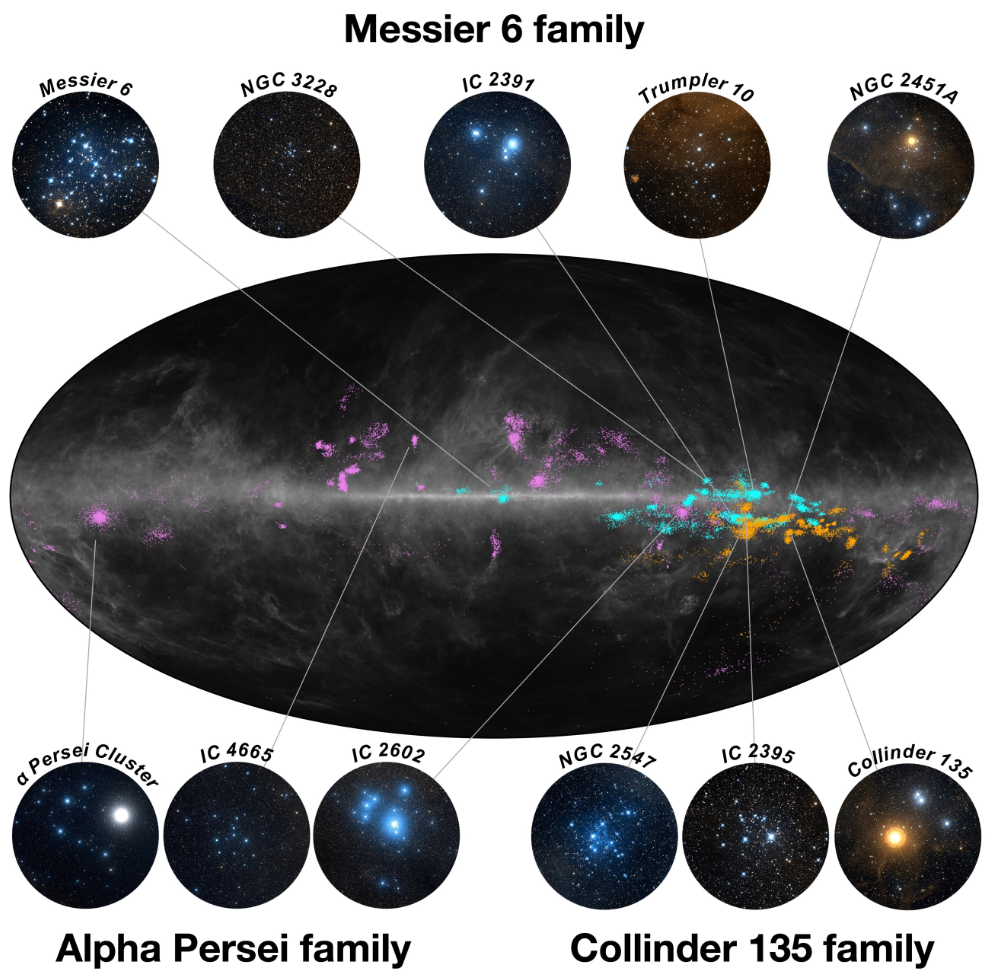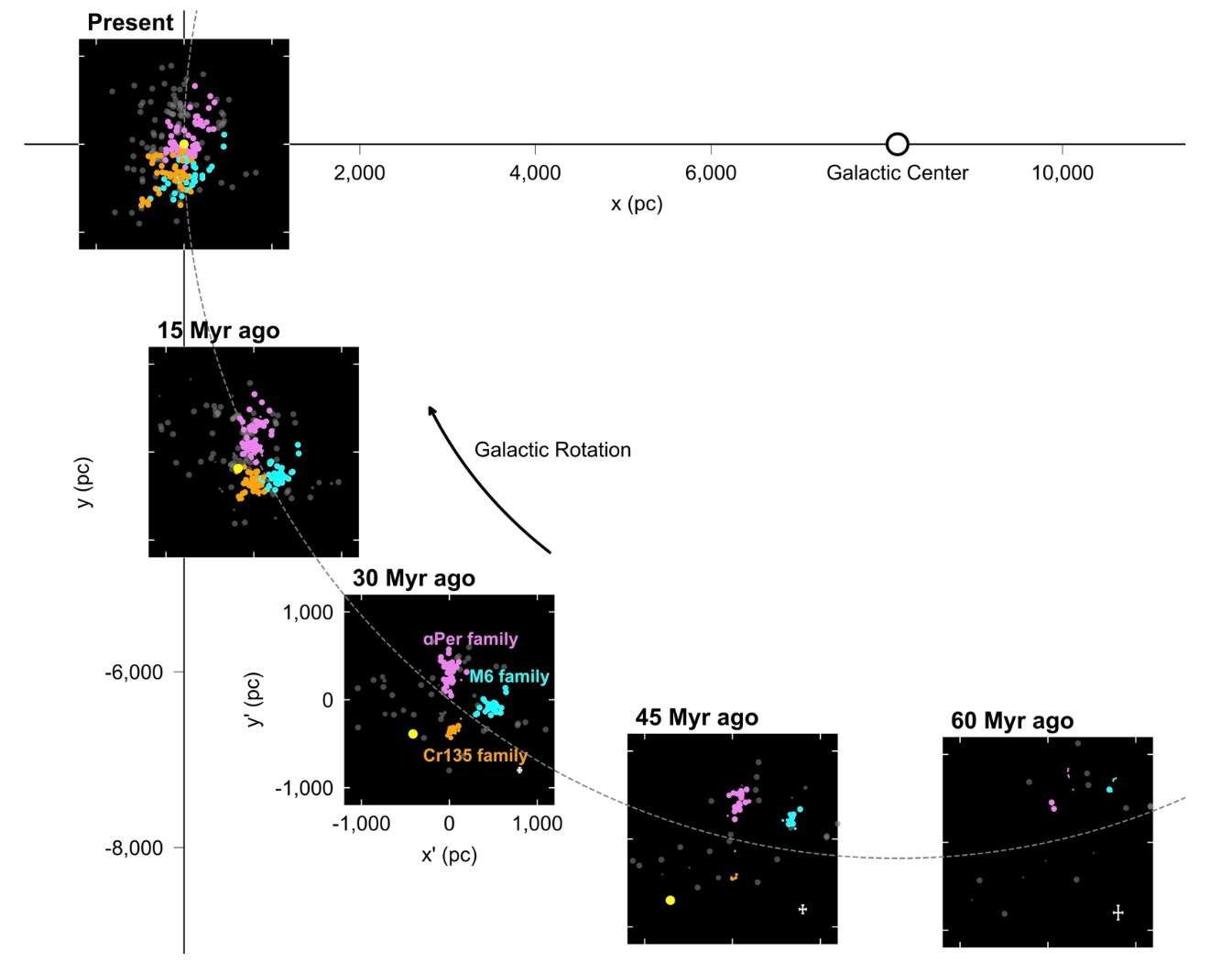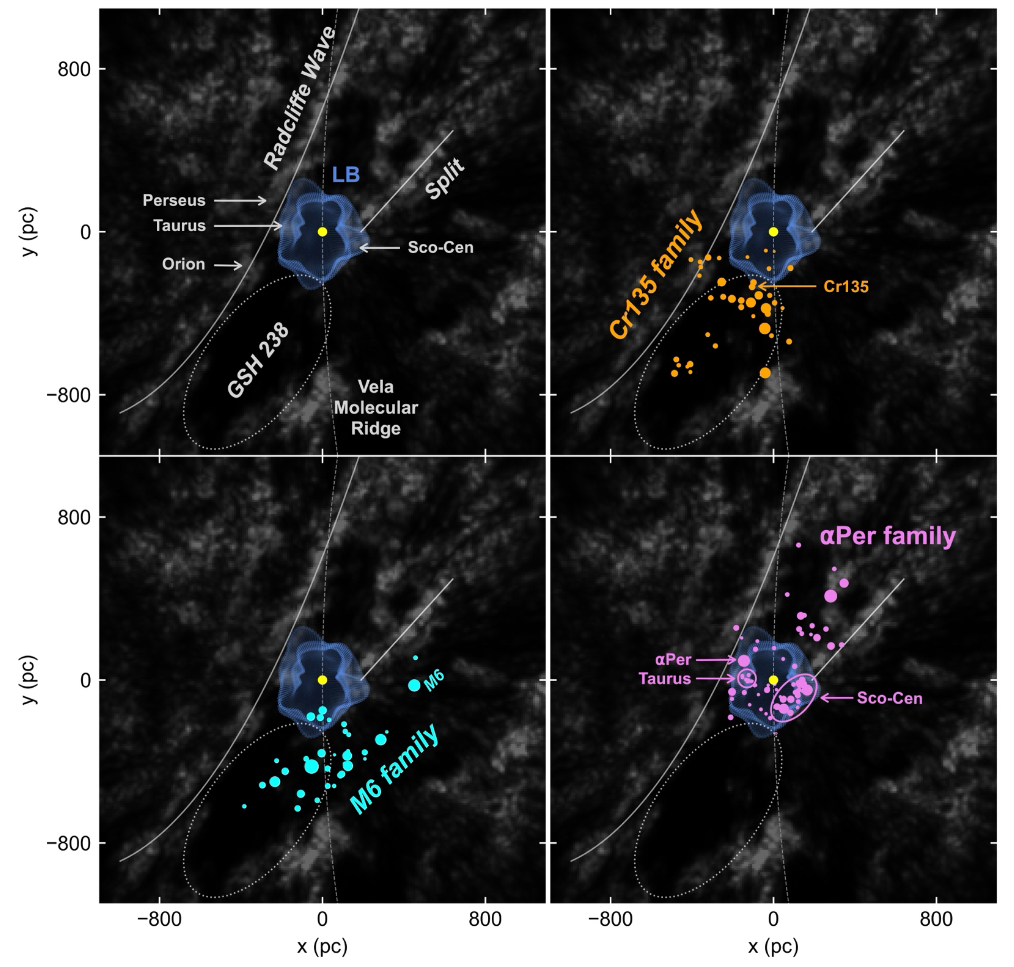
Most nearby young star clusters formed in three massive complexes
Star Clusters, Paper Summaries
10 June 2024 | Reading time: 1 minute
I am very excited to announce a Nature paper led by Cameren Swiggum in Vienna that I’m a co-author on! The paper uses my Gaia DR3 cluster catalogue to trace 57% of the young clusters near to the Sun back to just three distinct regions.
Stars and star clusters form in giant molecular clouds. These clouds are frequently large enough that multiple clusters form at once - and what’s so special about Cameren’s work is that he pioneered a way to trace clusters near to the Sun back to where they were born. By using data from ESA’s Gaia satellite, we traced the clusters back along their orbits around the Galaxy to where they came from:

The somewhat scattered present-day distribution of clusters (first panel, top left) in the Galaxy actually goes back to three individual regions, which are revealed as a function of time.
The connection to the interstellar medium
We also investigated if there was any link between the local dust distribution and these cluster families.
The solar neighbourhood is known to contain multiple ‘bubbles’ formed by past star formation events. The number of supernovae produced by these cluster families is consistent with the amount of energy it would take to form these bubbles - suggesting that they formed them!
Looking at the distribution of clusters in the present day, you can see that many of these young clusters sit at the ‘edges’ of these bubbles and shells.

The paper
You can check out the paper now in Nature and on the arXiv.
And by the way: Cameren made interactive versions of the figures that are very fun to play around with. For instance - here’s an interactive version of the orbital traceback: